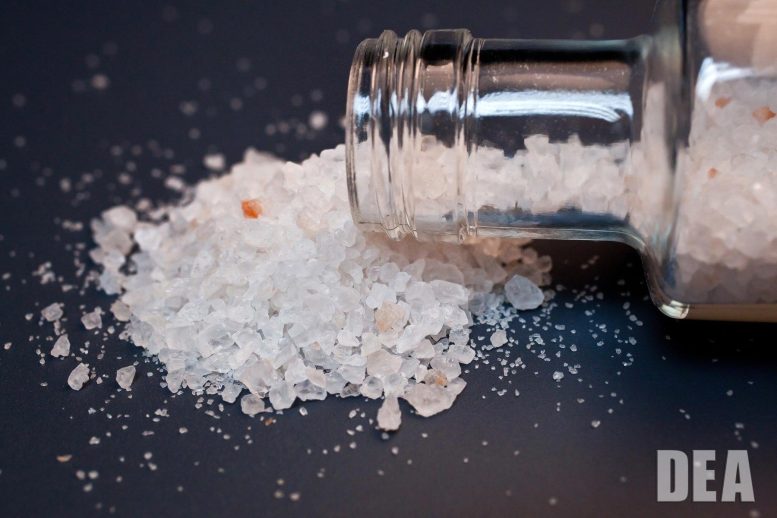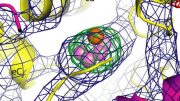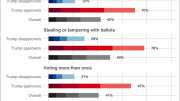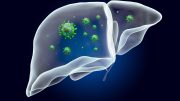
In October 2011, the U.S. Drug Enforcement Administration (DEA) placed mephedrone on Schedule 1 of the Controlled Substances Act for one year, pending further study. Credit: DEA
As the use of synthetic stimulants collectively known as “bath salts” continues, a new study suggests that mephedrone and drugs like it may have significant addiction potential and found that the effects on the brain’s reward circuits are comparable to those of cocaine.
The use of the synthetic stimulants collectively known as “bath salts” have gained popularity among recreational drug users over the last five years, largely because they were readily available and unrestricted via the Internet and at convenience stores, and were virtually unregulated.
Recent studies point to compulsive drug taking among bath salts users, and several deaths have been blamed on the bath salt mephedrone (4-methylmethcathinone or “meow-meow”). This has led several countries to ban the production, possession, and sale of mephedrone and other cathinone derivative drugs.
In October 2011, the U.S. Drug Enforcement Administration placed mephedrone on Schedule 1 of the Controlled Substances Act for one year, pending further study. “Basically, the DEA was saying we don’t know enough about these drugs to know how potentially dangerous they could be, so we’re going to make them maximally restricted, gather more data, and then come to a more reasoned decision as to how we should classify these compounds,” said C.J. Malanga, MD, PhD, associate professor of neurology, pediatrics and psychology at the University of North Carolina School of Medicine. He is also a member of the UNC’s Bowles Center for Alcohol Studies.
Now, results of a new study led by Malanga offer compelling evidence for the first time that mephedrone, like cocaine, does have potential for abuse and addiction. “The effects of mephedrone on the brain’s reward circuits are comparable to similar doses of cocaine,” he said. “As expected our research shows that mephedrone likely has significant abuse liability.”
A report of the study was published online on June 21, 2012, by the journal Behavioural Brain Research. The report’s first author and MD/PhD student at UNC J. Elliott Robinson points out that mephedrone and other potentially addictive stimulants “inappropriately activate brain reward circuits that are involved in positive reinforcement. These play a role in the drug ‘high’ and compulsive drug taking.”
The study of laboratory mice used intracranial self-stimulation (ICSS), a technique developed in the 1950s that can measure a drug’s ability to activate reward circuits. In ICSS studies, animals are trained to perform a behavioral task (pressing a lever or a button with their nose or, as in this study, spinning a wheel) to receive a reward: direct stimulation of the brain pathways involved in reward perception.
During the study, adult animals were implanted with brain-stimulating electrodes. Measures of their wheel-spinning effort were made before, during, and after they received various doses of either mephedrone or cocaine.
“One of the unique features of ICSS is that all drugs of abuse, regardless of how they work pharmacologically, do very similar things to ICSS: they make ICSS more rewarding,” Malanga said. “Animals work harder to get less of it [ICSS] when we give them these drugs.”
Indeed, as was expected, cocaine increased the ability of mice to be rewarded by self-stimulation. “And what we found, which is new, is that mephedrone does the same thing. It increases the rewarding potency of ICSS just like cocaine does. ”
Malanga said the study supports the idea that mephedrone and drugs like it may have significant addiction potential, “and justifies the recent legislation to maintain maximum restriction to their access by the Food and Drug Administration.” On July 9 President Obama signed into law legislation passed by Congress to permanently ban the sale of bath salts in the U.S.
Reference: “Mephedrone (4-methylmethcathinone) and intracranial self-stimulation in C57BL/6J mice: Comparison to cocaine” by J. Elliott Robinson, Abigail E. Agoglia, Eric W. Fish, Michael C. Krouse and C.J. Malanga, 21 June 2012, Behavioural Brain Research.
DOI: 10.1016/j.bbr.2012.06.012
Along with Malanga and Robinson, other UNC co-authors are Abigail E. Agoglia, Eric W. Fish, and Michael E. Krouse.
Support for the research comes from the National Institute on Alcohol Abuse and Alcoholism and the National Institute on Drug Abuse, which are components of the National Institutes of Health.









They need to remove all of this from the stores. I just saw a newsreport where they found this in several stores!
I used to love taking a sea salt bath, but over time the bath became very rough and unpleasant. I thought I would have to buy a new bathtub, but my friend advised me to contact the company on this link that reglazes the bathtub. I couldn’t even believe my eyes when I saw a snow-white and glossy bath in just less than a day.
Good Work I like it